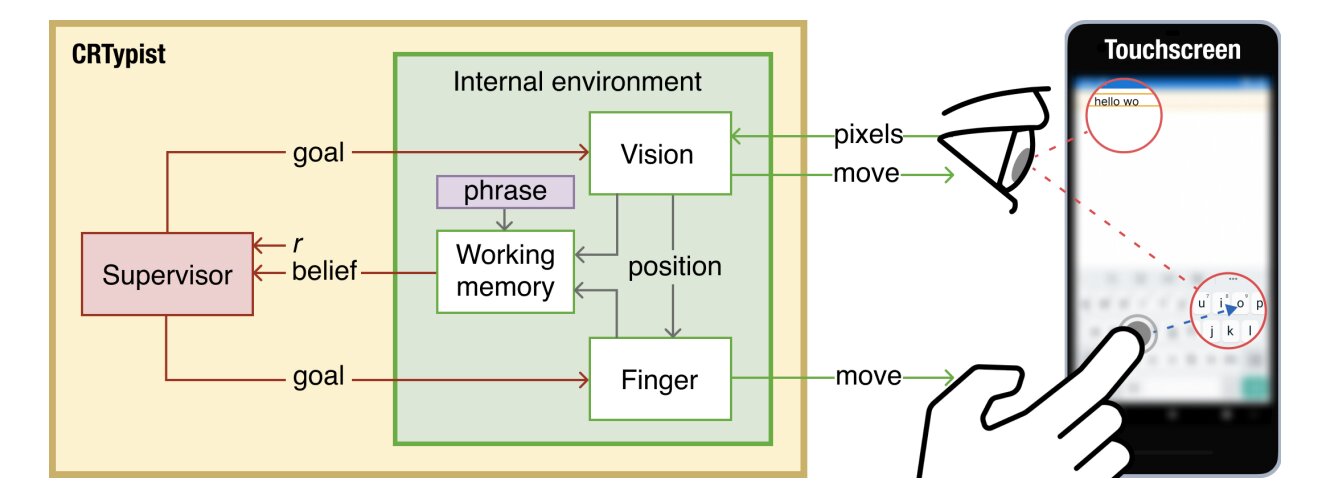
An entirely new predictive typing model can simulate different kinds of users, helping reveal ways to optimize how we use our phones. Developed by researchers at Aalto University, the new model captures the difference between typing with one or two hands and between younger and older users.
In May, the researchers will present their findings at the CHI Conference, a publication forum in the field of human-computer interaction. The peer-reviewed study is available here.
"Typing on a phone requires manual dexterity and visual perception: We press buttons, proofread text, and correct mistakes. We also use our working memory. Automatic text correction functions can help some people, while for others they can make typing harder," says Professor Antti Oulasvirta of Aalto University.
The researchers created a machine-learning model that uses its virtual "eyes and fingers" and working memory to type out a sentence, just like humans do. That means it also makes similar mistakes and has to correct them.
"We created a simulated user with a human-like visual and motor system. Then we trained it millions of times in a keyboard simulator. Eventually, it learned typing skills that can also be used to type in various situations outside the simulator," explains Oulasvirta.
The predictive typing model was developed in collaboration with Google. New designs for phone keyboards are normally tested with real users, which is costly and time-consuming. The project's goal is to complement those tests so keyboards can be evaluated and optimized more quickly and easily.
For Oulasvirta, this is part of a larger effort to improve user interfaces overall and understand how humans behave in task-oriented situations. He leads a research group at Aalto that uses computational models of human behavior to probe these questions.
"We can train computer models so that we don't need observation of lots of people to make predictions. User interfaces are everywhere today—fundamentally, this work aims to create a more functional society and smoother everyday life," he says.
More information: Danqing Shi et al, CRTypist: Simulating Touchscreen Typing Behavior via Computational Rationality (2024). crtypist.github.io/material/crtypist.pdf
Citation: Team develops a way to teach a computer to type like a human (2024, April 18) retrieved 18 April 2024 from https://techxplore.com/news/2024-04-team-human.html
This document is subject to copyright. Apart from any fair dealing for the purpose of private study or research, no part may be reproduced without the written permission. The content is provided for information purposes only.
